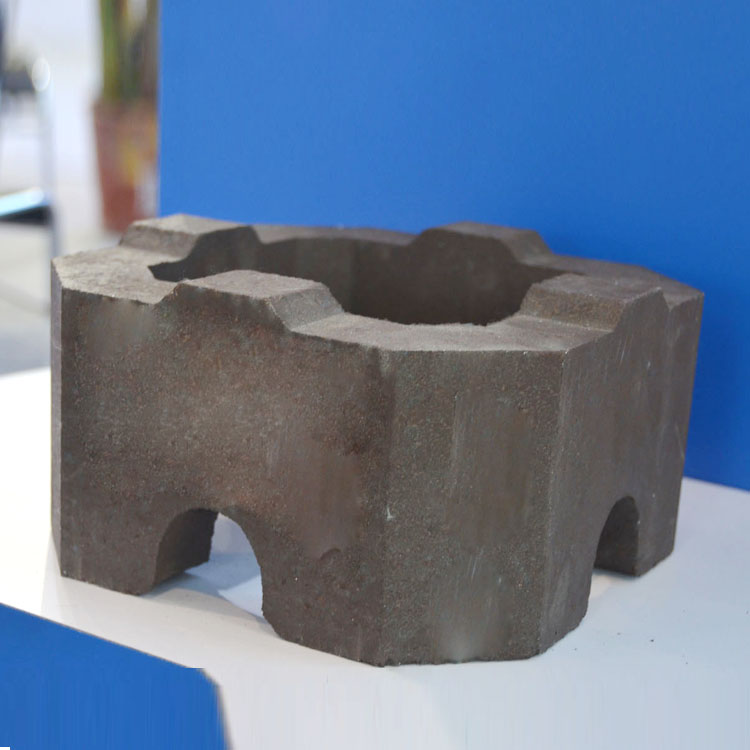.jpg?x-oss-process=image/resize,h_1000,m_lfit/format,webp)
In industrial production, refractory materials play a crucial role. They are used in various high - temperature environments such as industrial furnaces, ensuring the normal operation of industrial processes. Traditional magnesia - chrome bricks were widely used in the 20th century, but they had some significant short - comings.
There are different types of traditional magnesia - chrome bricks. Among them, unburned magnesia - chrome bricks have some advantages. For example, they have a simple manufacturing process, which can significantly reduce production costs. Their thermal stability is also quite good, with a thermal shock resistance that can withstand temperature changes of about 10 - 15 times from room temperature to 1000°C without significant damage. However, their high - temperature strength is a major drawback. At high temperatures above 1400°C, their compressive strength may drop to about 30 - 40 MPa, which is far from meeting the requirements of some high - end industrial applications.
In the late 1950s, a revolutionary product, the directly bonded magnesia - chrome brick, was developed. The research and development process of directly bonded magnesia - chrome bricks was a painstaking one. Scientists started by studying the mineral composition and crystal structure of magnesia and chrome. They found that by carefully controlling the firing temperature and atmosphere, they could promote the direct bonding between magnesia and chrome crystals. After numerous experiments, they finally determined the optimal formula and firing process. The firing temperature was generally controlled at about 1700 - 1800°C, which could ensure the formation of a strong direct - bonding structure.
.jpg)
Let's compare the characteristics of directly bonded magnesia - chrome bricks and traditional magnesia - chrome bricks. In terms of high - temperature strength, directly bonded magnesia - chrome bricks have a compressive strength of over 60 MPa at 1400°C, which is nearly twice that of unburned magnesia - chrome bricks. Their corrosion resistance is also much better. In a corrosive environment of a certain chemical industry, the corrosion rate of directly bonded magnesia - chrome bricks is only about half of that of traditional magnesia - chrome bricks. In addition, their thermal shock resistance has also been improved, being able to withstand about 20 - 25 times of thermal shock from room temperature to 1000°C.
The emergence of directly bonded magnesia - chrome bricks has had a huge promoting effect on the refractory materials industry. It has raised the overall performance level of refractory materials, enabling industrial furnaces to operate at higher temperatures and in more complex environments. Many enterprises have benefited from using directly bonded magnesia - chrome bricks. For example, a steelmaking enterprise replaced traditional magnesia - chrome bricks with directly bonded magnesia - chrome bricks in its converter. As a result, the service life of the converter lining was extended from about 1000 heats to about 1500 heats, greatly improving production efficiency and reducing production costs.

In conclusion, directly bonded magnesia - chrome bricks are a revolutionary product that has effectively solved the shortcomings of traditional magnesia - chrome bricks. Their excellent performance makes them have broad application prospects in various industries such as steelmaking, cement, and chemical industries. If you are looking for high - performance refractory materials for your industrial production, directly bonded magnesia - chrome bricks are definitely your best choice.
Don't miss out on this amazing product! Contact us now to learn more about directly bonded magnesia - chrome bricks and how they can enhance your industrial operations. Let's work together to achieve greater efficiency and cost - savings!

